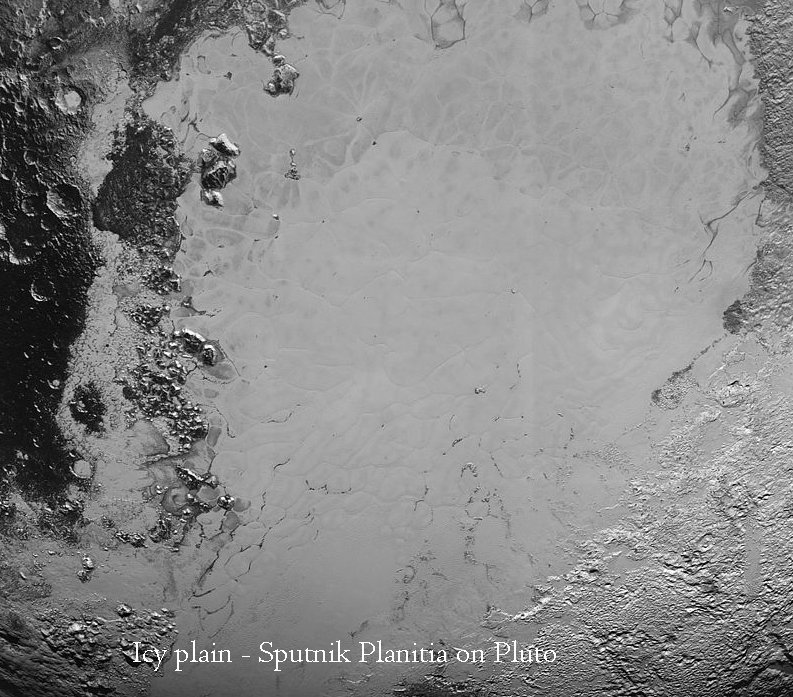Eddie Gonzales Jr. – MessageToEagle.com – A new research provides evidence that a subsurface ocean on Pluto, (previously thought to be frozen), may actually be hidden under an insulating cloud of gas.
In July 2015, NASA’s New Horizons spacecraft flew through Pluto’s system, providing the first-ever close-up images of this distant dwarf planet and its moons.

The images showed Pluto’s unexpected topography, including a white-colored ellipsoidal basin named Sputnik Planitia, located near the equator and roughly the size of Texas.
Scientists at Japan’s Hokkaido University, the Tokyo Institute of Technology, Tokushima University, Osaka University, Kobe University, and at the University of California, Santa Cruz, believe a subsurface ocean exists beneath the ice shell which is thinned at Sputnik Planitia.
However, these observations are contradictory to the age of the dwarf planet because the ocean should have frozen a long time ago and the inner surface of the ice shell facing the ocean should have also been flattened.
The team hypothesized that an “insulating layer” of gas hydrates exists beneath the icy surface of Sputnik Planitia. They are highly viscous, have low thermal conductivity, and could prevent the subsurface ocean from freezing..
The researchers simulated two scenarios: one where an insulating layer of gas hydrates existed between the ocean and the icy shell, and one where it did not
They showed that, without a gas hydrate insulating layer, the subsurface sea would have frozen completely hundreds of millions of years ago; but with one, it hardly freezes at all.
Also, it takes about one million years for a uniformly thick ice crust to completely form over the ocean, but with a gas hydrate insulating layer, it takes more than one billion years.
The simulation’s results support the possibility of a long-lived liquid ocean existing beneath the icy crust of Sputnik Planitia.
“This could mean there are more oceans in the universe than previously thought, making the existence of extraterrestrial life more plausible,” Shunichi Kamata of Hokkaido University who led the team, said in a press release.
Written by Eddie Gonzales Jr. – MessageToEagle.com Staff Writer








